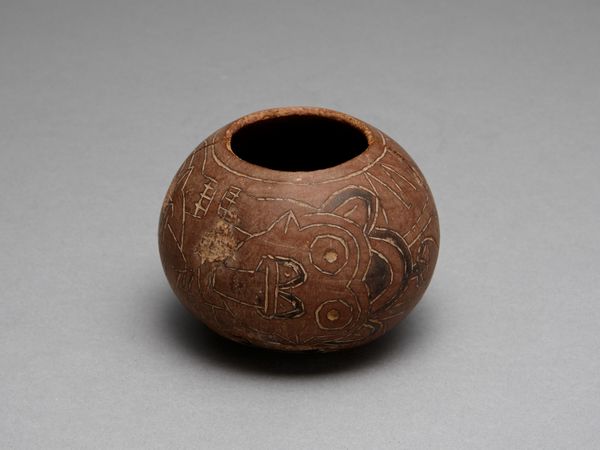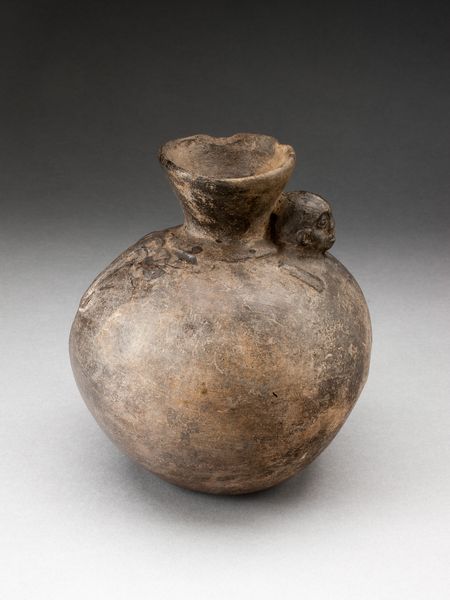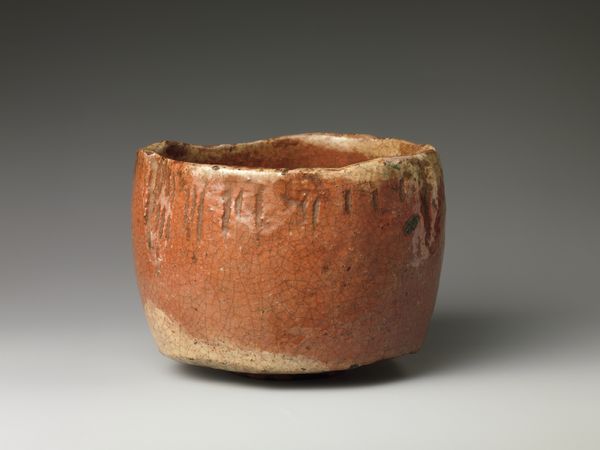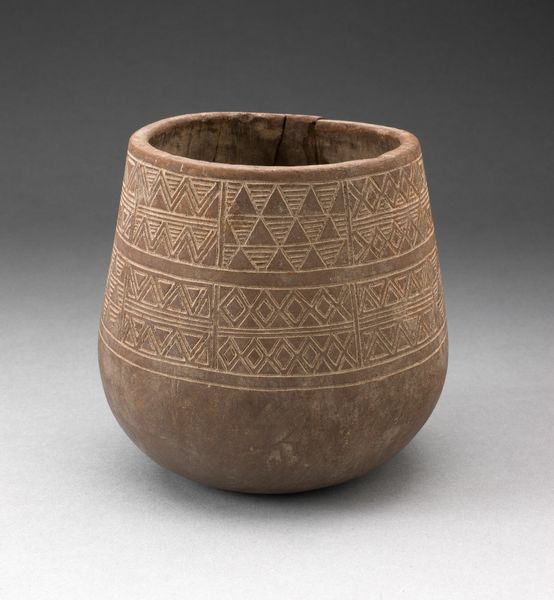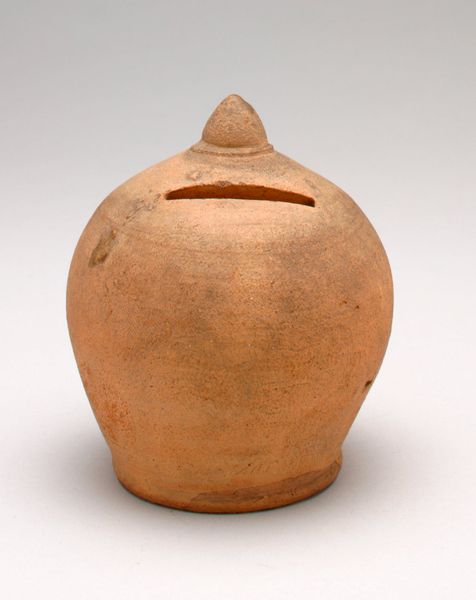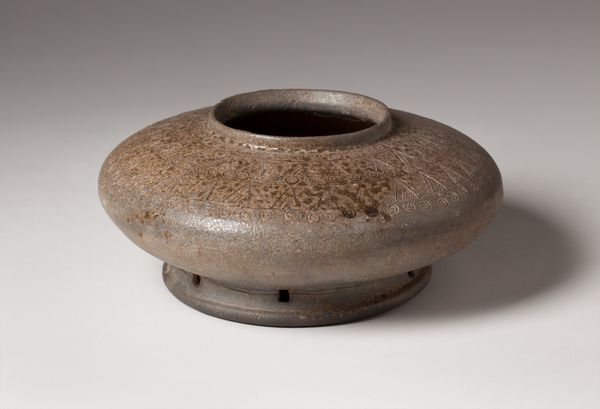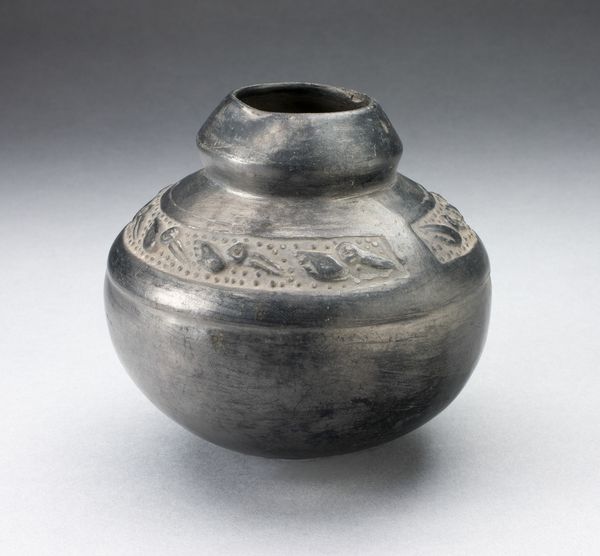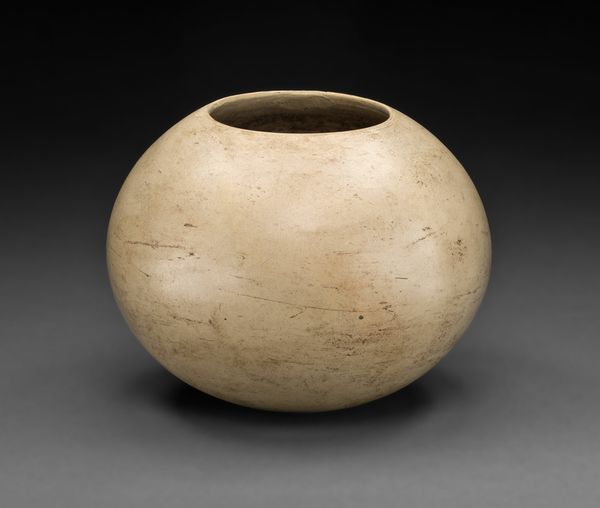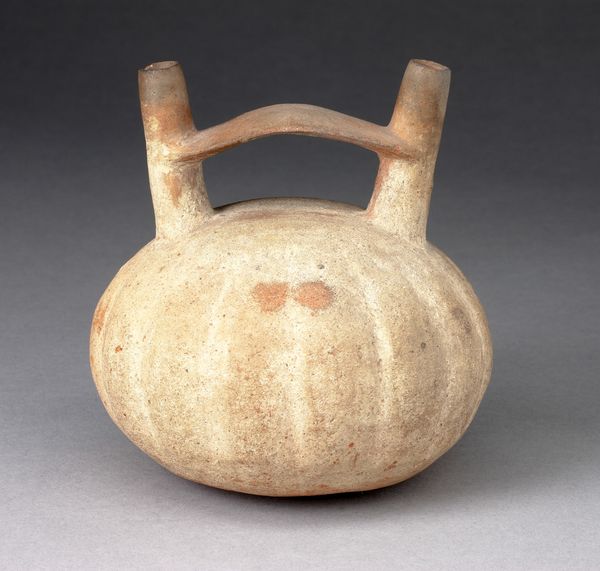
ceramic, terracotta
#
ceramic
#
terracotta
#
indigenous-americas
Dimensions: H. 7.3 cm (2 7/8 in.)
Copyright: Public Domain
This double-chambered vessel was formed out of clay by an artist in Teotihuacan, a powerful city in what is now Mexico. This small ceramic work testifies to the centrality of ritual practice in ancient Mesoamerica. The parallel openings suggest that the contents may have been offered simultaneously or shared between individuals. The site of Teotihuacan was a major religious center, and such objects were likely used by priests or other religious specialists in the course of sacred ceremonies. The formal qualities of the vessel, such as its symmetrical design and smooth surface, may have been intended to reflect the order and harmony of the cosmos. As historians, we consult archaeological reports, colonial-era chronicles, and indigenous oral traditions to reconstruct the social and religious context of these objects. Art provides a lens through which to understand the beliefs, values, and social structures of past societies.
Comments
No comments
Be the first to comment and join the conversation on the ultimate creative platform.


